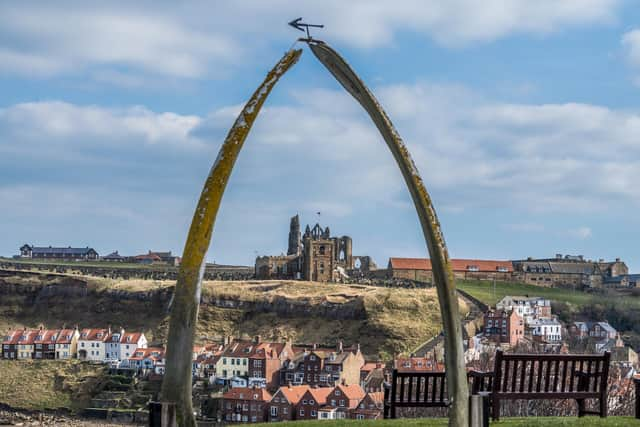Whitby Abbey: Solar panels proposed for roof of Grade I-listed visitor centre
English Heritage is seeking to install solar panels, stainless steel roofing, a new roof hatch, and lightning conductors on the roof of its shop within the grounds of Whitby Abbey. If approved, the solar panels could provide up to more than half of the site’s annual electricity use, according to the charity.
Before its conversion into a visitor centre, shop and museum in 2002, the building – which is owned and managed by English Heritage – was previously a banqueting house. The damaged and leaky zinc roof would be replaced with new terne-coated stainless steel roofing.
Advertisement
Hide AdAdvertisement
Hide AdOther repairs and improvements to the building would include replacing downpipes with larger ones, installing lightning and heat tape, and the photovoltaic solar panels on the roof. The organisation is seeking to reduce its building carbon emissions by 20 per cent across its sites.


The proposals seek to present “a holistic approach to repair, sensitive fabric improvement and alterations to support the ongoing viability of the site as a visitor centre, shop and museum,” according to English Heritage.
The organisation said that the proposed works would “positively contribute to securing and supporting the activity and economy of the historic site of Whitby Abbey as well as the surrounding seaside town of Whitby”.
No objections to the plan were raised by Whitby Town Council and no comments were received from members of the public.
Advertisement
Hide AdAdvertisement
Hide AdHistoric England reviewed the application and stated that the proposals had been “carefully designed to ensure that the interventions remain below the height of the parapet and are therefore largely invisible”.
It added: “Everything has been designed to minimise any visible intrusion and harm and it is considered that the proposed works are essential for the continued conservation, use and display of the Banqueting House.”
According to planning documents, both lightning rods would be located at the rear of the building and “only a small section rises above the highest part of the roof by a modest amount of 150mm (6 inches).”
The plan has been recommended for approval by the authority’s planning officers.
Comment Guidelines
National World encourages reader discussion on our stories. User feedback, insights and back-and-forth exchanges add a rich layer of context to reporting. Please review our Community Guidelines before commenting.
